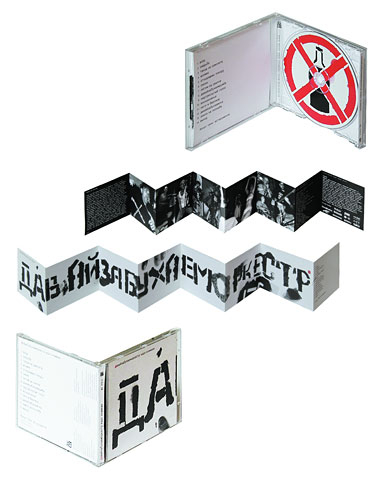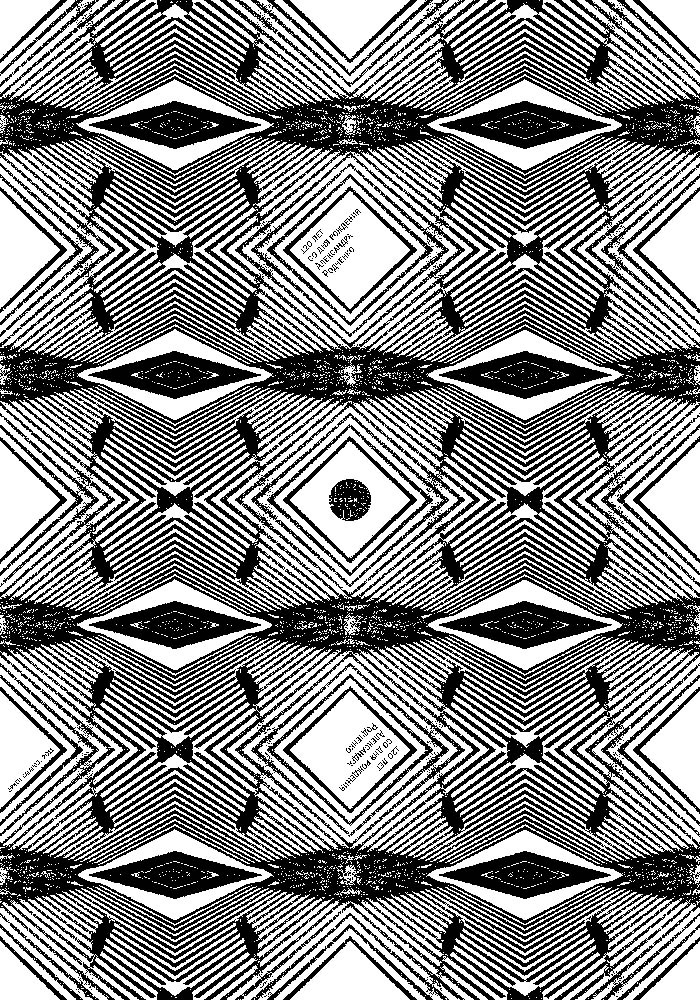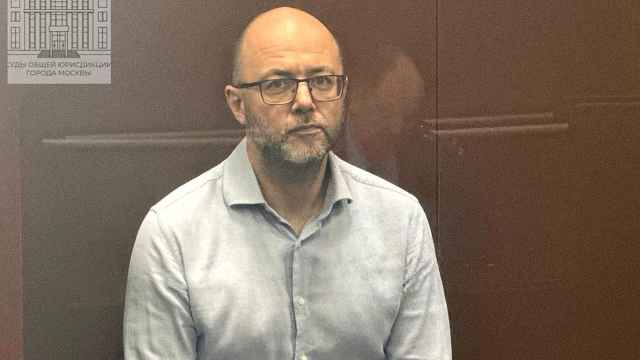It is often said that the difference between an artist and a designer is that an artist works for his/herself, while a designer performs a service. However, looking at Sergey Serov's list of the top designers working in Russia today, one can definitely recognize individual styles shining through that collectively give Russian design an identity. Today's installment rounds of Serov's top 20. Part 1 can be found here.
Sergey Serov is the head of the Higher Academic School of Graphic Design, which founded in 1997. His lecture "My Designers: Top 20" takes place at Artplay on Friday 18 Oct. at 4 p.m. as part of Moscow Design Week.
Read TMT's report on the exhibition.
Arkady Troyanker

Troyanker, an academician of the Academy of Graphic Design since 1992, and its president between 1997 and 2001, is a graphic designer focusing on book design, having graduated from the Moscow Printing Institute in 1964.
To many, his work represents the "second avant-garde" of the 1960s. Of the work of book designers, he explains that "Our set of instruments is very limited but there is some art in it — to play the tune with just a few notes available you have to be a real artist. Still, the book has to be readable and orderly."
Alexander Faldin
One of Faldin's more unique poster designs for the cultural centre "Dom." (Fallin Studio)
An Alexander Faldin poster is always immediately recognizable. The wildly successful commercial designer behind Fallin Studio is known for his concise style and use of visual metaphors, and manages to incorporate humor and social commentary into his design work.
His work has been featured in numerous poster exhibitions internationally and he is the recipient of numerous prestigious awards for his design work, including a Golden Bee in 1996 and 2006, and a Gold Prize at the Best Design of the Year in 1997.
Vladimir Chaika
Chaika's typography design work for which he recieved a Golden Bee in 2004. (Golden Bee)
Chaika, from Astrakhan, needs no introduction as he is well-established and respected in design circles as a result of his work in corporate identity and the design of symbols and logos. He is an academician of the Russian Academy of Graphic Design, and its president since 2011.
He is a laureate of the State Prize of the Russian Federation for literature and the arts (1995), a Golden Bee in 2004, and numerous other international prizes. He is also the subject of many solo exhibitions for his design work, the most recent being "Chaika in Siberia," shown at the Krasnoyarsk Cultural-Historical Museum in 2008.
Erken Kagarov

Born to a family of artists and trained in Tashkent, Uzbekistan, he moved to Moscow in 1992 and in 1994, founded the studio Imadesign, where remains its creative director. He is often involved in corporate identity and branding projects, infusing humor in his visual language. He is a recipient of Golden Bee awards and has been exhibited in solo shows.
According to Kagarov, "the most exciting and interesting thing for me is to create or show a paradox, to display sudden correlations, intensity, complication, beauty and ambiguity of common and simple things, to understand the magic of color, space and line over again."
Petr Bankov
Graphic designer Petr Bankov is the creative director of one of the largest design agencies in Russia, Design Depot. Born in Rechica in the Gormel region, he went to Minsk, where he was trained at the faculty of decorative arts at the Minsk Art Academy. He is a two-time winner of the Golden Bee in 1998.
Dmitry Kavko

The rebellious nature of Kavko is clearly seen in his work that goes against all formal notions of what "design" is. (Dmitry Kavko)
Born in the city of Perm, and an engineer by training, Kavko was a member of OstenGruppe between 2003 and 2008, the winning a Design Innovation Award in 2005 as part of that studio. He continues in the tradition of the avant garde artists of the 1920s, though the influence of internet and visual culture.
Preferring the freedom he gets from freelance jobs, he started his own studio DesignKavko in 2008. He said he tries to "push the realm of the possible, while remaining within the formal framework of the design process" in his commissions, and is not in it for the money, but as a way to buy free time. Recently, he has been dabbling in video art.
Dimon Zakharov
Zakharov is a poster designer that whole entering the Higher Academic School of Graphic Design as a mature student, quickly became one of its stars, winning numerous competitions before graduating and becoming part of the faculty.
His style is bright, bold and minimal, with a clear image and message, often reflecting social and political realities.
Valery Akopov
Akopov, considered a hero of Soviet design and a master of applied graphics, graduated from the Moscow Institute of Printing in 1961. From 1958 to 1993, he worked as an artist at the Workshop of Graphic Design at the Moscow Union of Artists and subsequently headed the Arts Council of the organization for many years. Many consider Akopov to be crucial to the development of the Soviet visual style.
He is an academician of the Academy of Graphic Design, where he was president between 1992 to 1994. He was the laureate of the State Prize for Literature and Art in 2003, and has been the subject of numerous solo exhibitions.
Evgeny Korneev
Korneev's book layouts often include cut-ous, oversized pages and multi-page spreads. (Higher Academic School of Graphic Design)
Korneev was a graduate of the Moscow Institute of Civil Engineering, and shifted his focus to graphic design in 1990, where he specialises in book and magazine design. His style can be described as playful, as he often makes use of non-standard formats, uncommon sizes, materials, resulting in a flat page that is also three-dimensional.
His designs and layouts can be seen in architectural publications Project Russia, Project Classic and Project International. Founder of Razdizayn agency. Received a Golden Bee diploma in 2004 for typography.
Anna Naumova

Naumova, a graduate of the Moscow Printing Institute, was one of the co-founders of OstenGruppe, She won diplomas at the 2000 and 2006 Golden Bees and has been an academician at the Academy of Graphic Design since 2007.
In explaining her approach, she explained that "Posters let you express yourself in a most accurate and exact way. The main criteria of my work are whether I manage to grasp or seize the right sense/emotion. Sometimes I don’t even polish my sketches but simply enlarge them, that’s where my typographic experience works out."
A Message from The Moscow Times:
Dear readers,
We are facing unprecedented challenges. Russia's Prosecutor General's Office has designated The Moscow Times as an "undesirable" organization, criminalizing our work and putting our staff at risk of prosecution. This follows our earlier unjust labeling as a "foreign agent."
These actions are direct attempts to silence independent journalism in Russia. The authorities claim our work "discredits the decisions of the Russian leadership." We see things differently: we strive to provide accurate, unbiased reporting on Russia.
We, the journalists of The Moscow Times, refuse to be silenced. But to continue our work, we need your help.
Your support, no matter how small, makes a world of difference. If you can, please support us monthly starting from just $2. It's quick to set up, and every contribution makes a significant impact.
By supporting The Moscow Times, you're defending open, independent journalism in the face of repression. Thank you for standing with us.
Remind me later.





